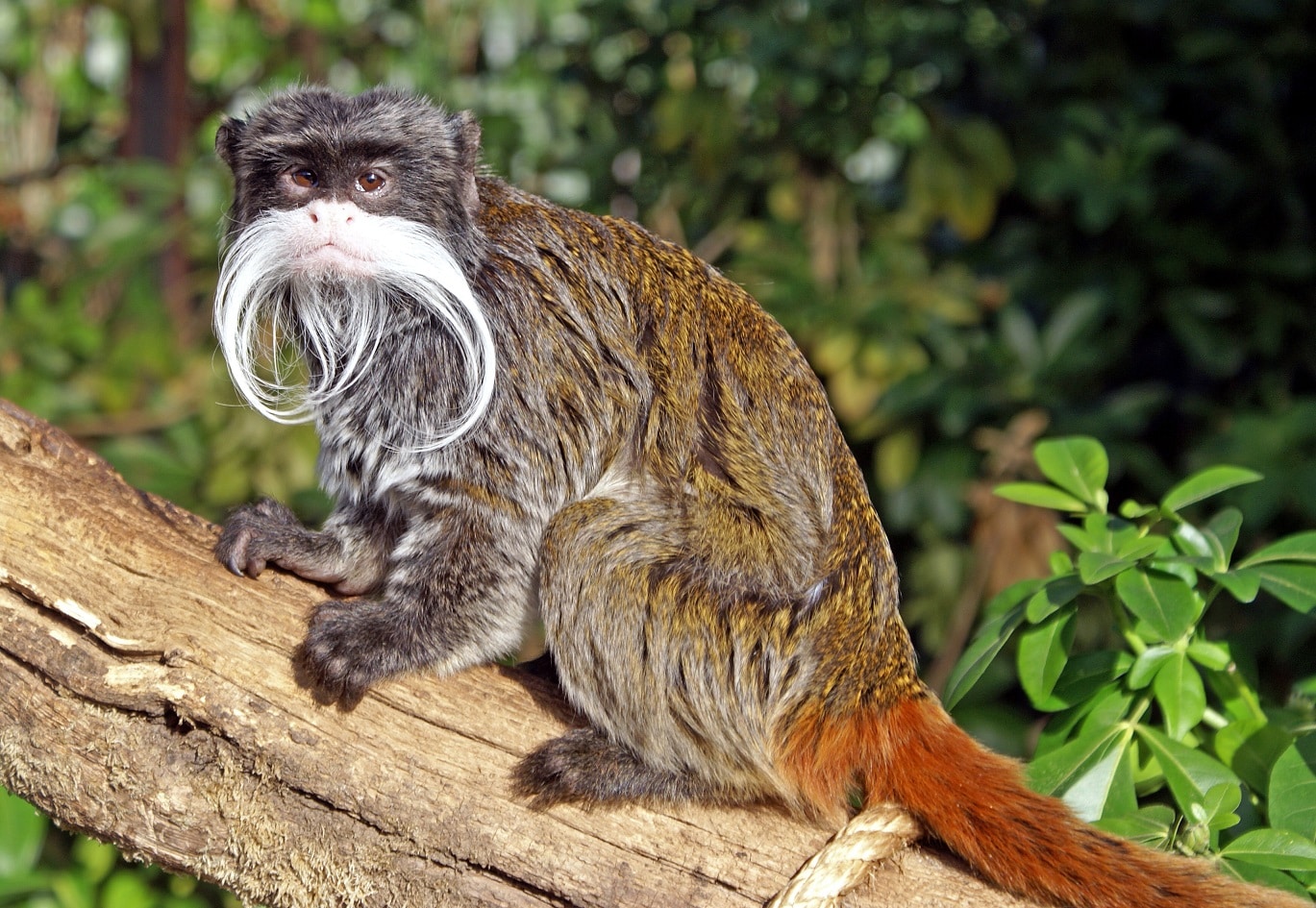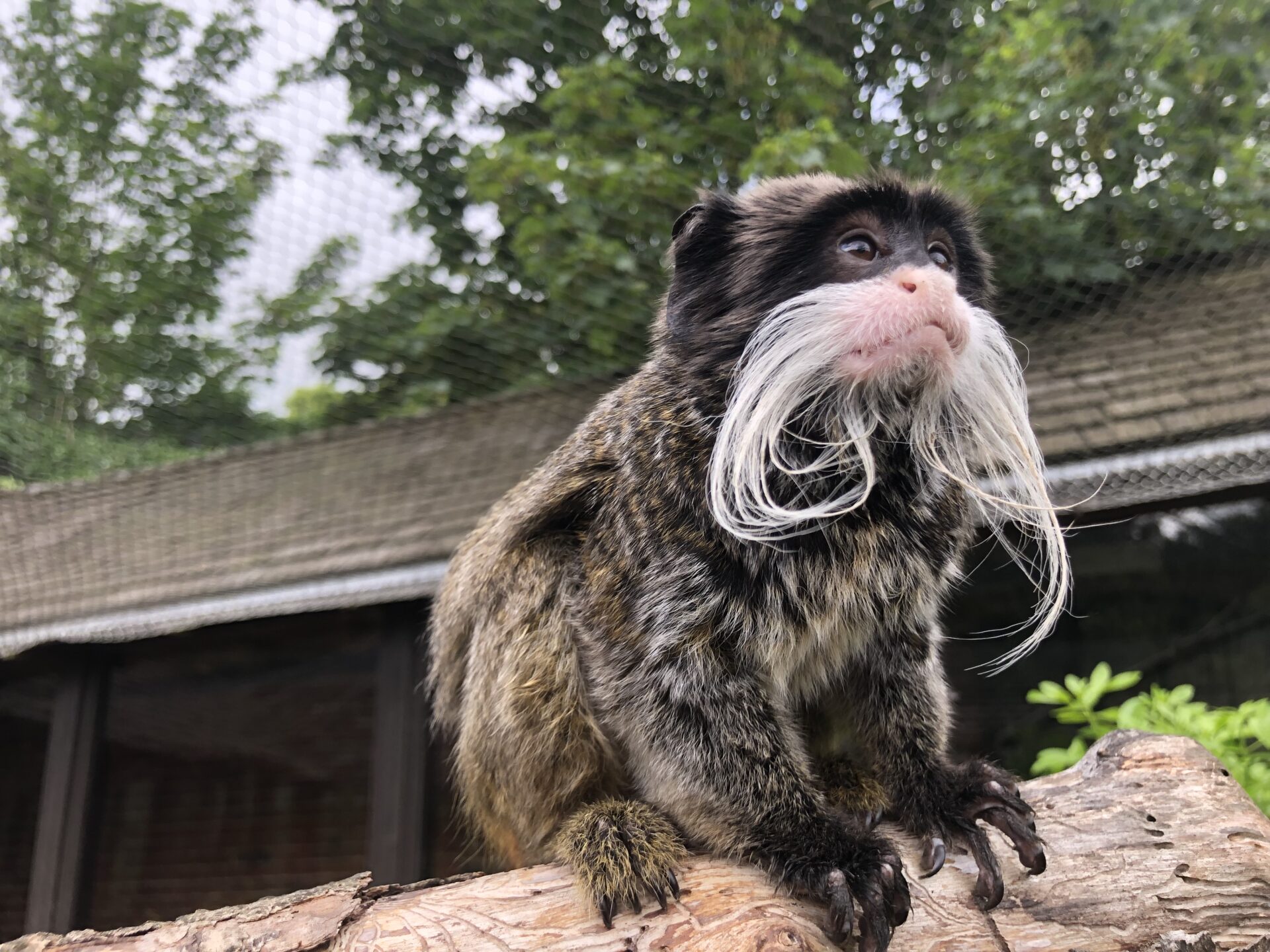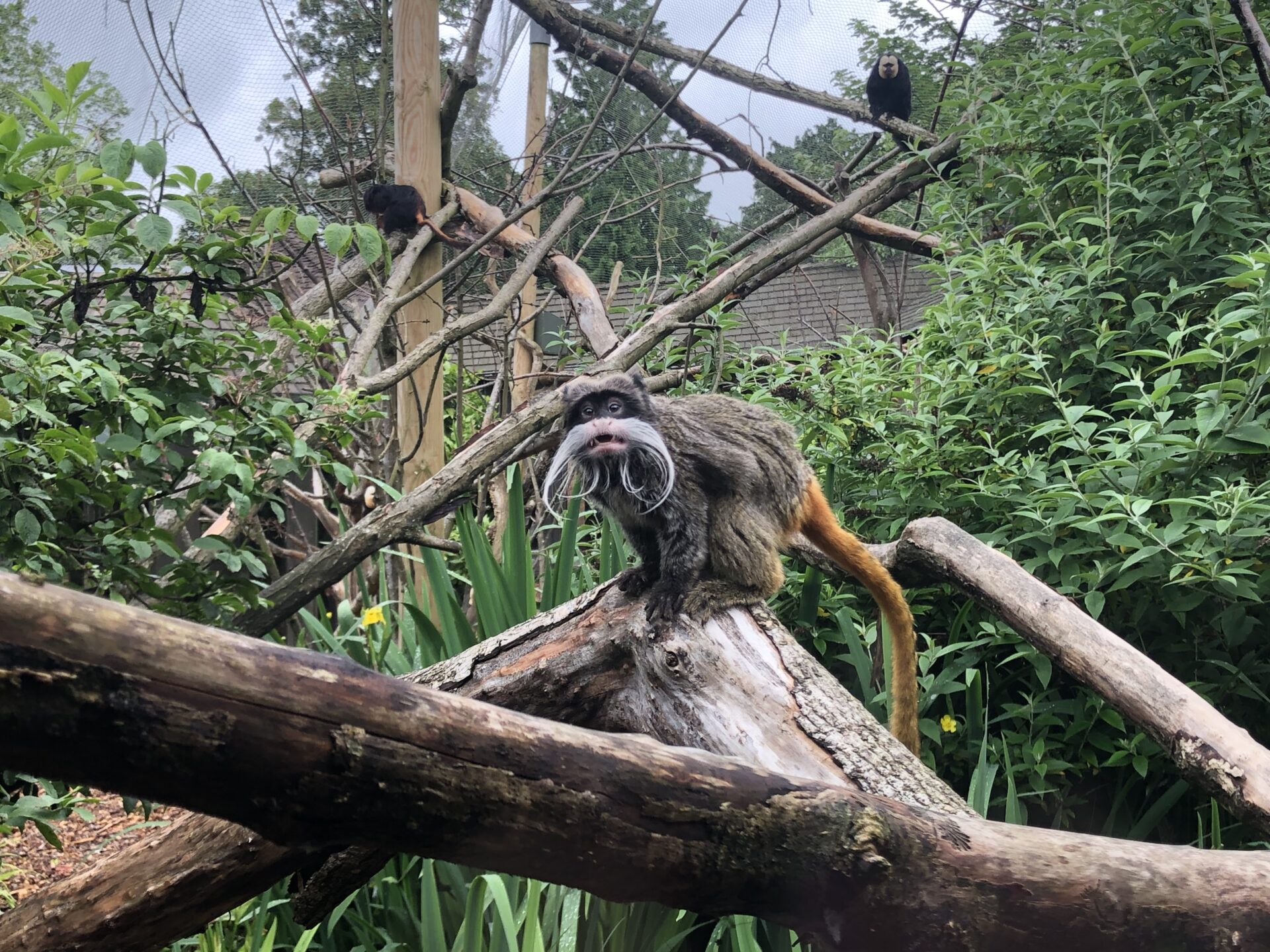Bearded emperor tamarin
Common Name: Bearded emperor tamarin
Scientific Name: Saguinus imperator subgrisescens
Emperor tamarins got their name due to their long moustache, which was thought to look like the moustache of Emperor Wilhelm II of Germany.
When born, baby tamarins can weigh around 25% of the mother’s body weight!
Bearded emperor tamarins make many noises (vocalisations), such as hisses, trills and long chirping calls.
There are 2 subspecies of emperor tamarin. Bearded emperor tamarins have a white beard along with their white moustache, whereas the black-chinned emperor tamarin only has the distinctive white moustache.
To prevent others in their group from breeding, the dominant female will release pheromones (chemicals) when scent marking their territory. This controls the reproductive abilities of the other females in the group.
Fast Facts
-
Status
Least concern
-
Size
Head and body: 23 - 26cm.
Tail length: 35 - 42cm -
Weight
350g - 450g
-
Gestation
4 ½ - 5 months
-
Young
2
-
Life expectancy
Up to 20 years in captivity, less in the wild
In the wild
Bearded emperor tamarins are omnivores and feed on many different things such as fruits, nectar, gum from trees, fungi and small animals including insects (and larvae), snails and frogs.
Rather than making new holes in trees to get to the gum it produces, bearded emperor tamarins find and use existing or healing holes made by other tamarins in trees.
These small primates are found in south east Peru, western Brazil and Bolivia in South America. They mostly live in primary and secondary lowland tropical rainforests, spending most of their time moving and feeding in the middle and lower parts of the tree canopy, only occasionally going higher in the trees.
Bearded emperor tamarins are social animals and live in groups of around 2 to 10 individuals, usually with one breeding pair within the group. The dominant female of the group most often gives birth to twins and just like other tamarins (and marmosets) the male carries the young around and passes them back to the female for milk.
Young bearded emperor tamarins are carried until they are about 70 days old, at this time they can move around and start to find their own food. These animals are mature at 12 to 18 months old and are fully grown by 2 years old.
The natural predators of the bearded emperor tamarin are not well known. However birds of prey, snakes and wild cats have been known to hunt small primates including different species of tamarin.
To stay safe, bearded emperor tamarins live closely with other species of tamarins such as the saddle-back tamarin, so that there are more animals looking out for threats. If a predator is spotted, the tamarins give out alarm calls to warn other tamarins and animals close by that a threat has been spotted.
Bearded emperor tamarins are threatened by the illegal pet trade and by habitat loss.. These animals have lost much of their habitat due to deforestation from logging, construction of roads and highways, as well as land cleared for cattle ranching and for an increasing human population.
These small primates live in many protected areas across its range. Bearded emperor tamarins are also found in many zoos worldwide, and are involved in captive breeding programs to ensure the survival of the species.


